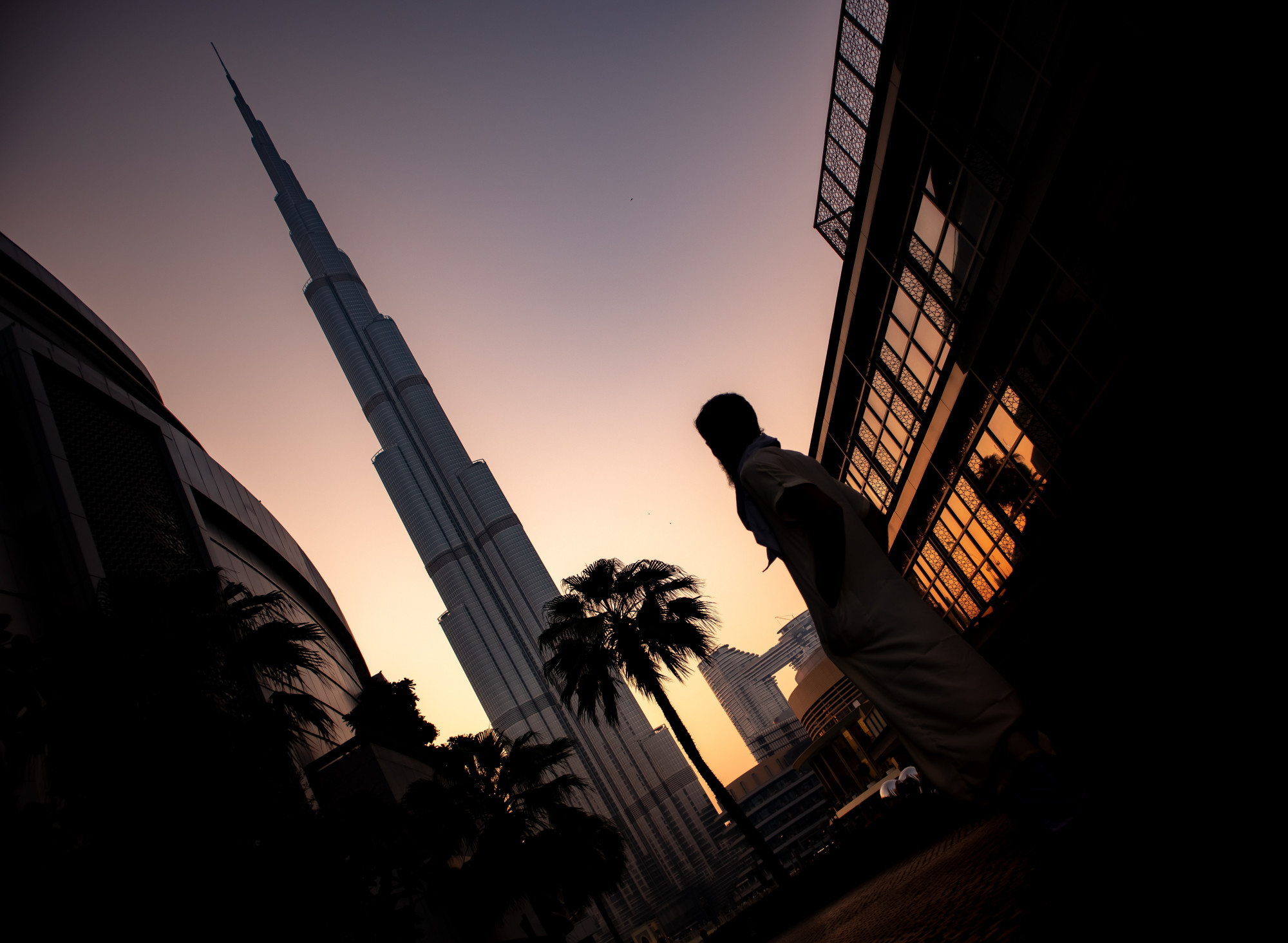Our Thinking
Design that connects us
Roadblocks & Unparalleled Opportunity: The Challenges of Working in the Middle East
In the latest installment of the Mima blog, we shift our focus to The Middle East.
Having worked on multiple large-scale, high-profile projects, we interview our Head of Wayfinding - Chris Girling - on the challenges and opportunities of working in the region...

Why do a lot of companies, big and small, look towards the Middle East when they're when they're looking for work?
I don't think anyone can shy away from the fact that there's a greater level of investment across the Middle East than perhaps any other country or selection of countries worldwide. If you look at Saudi Arabia alone, across the giga projects they're investing potentially more than USD900bn. When you've got big budgets it's going to draw in talent from around the world and it’s going to bring a huge focus on new opportunities and innovations.
So, it's certainly a good financial standing that's going to give us budgets that we wouldn't have elsewhere but then also it gives us opportunities to work on projects that allow us to innovate, explore and develop solutions. That pushes creative boundaries that we wouldn't be able to elsewhere, in part because they're on the budgets to do it and in part because I think a lot of clients are constrained by playing it 'safe' and often for good reason. This is true especially when you've got to comply with strict standards, where to a degree there's far less of that constraint in the Middle East. As a result, you see more risky design but I think that that's going to create unseen solutions and I hope that we can learn from those solutions and cherry-pick and bring them back over to Europe and beyond. A good example of that ability to innovate is the urban realm. Over in the UK, there's an awful lot of historic tradition in how we approach that and how that is rolled out and that is being entirely reinvented in pockets of the Middle East. So in terms of urban regeneration and urban growth, the question is what can we learn and bring back over here?
It's that kind of cross-pollination of skills and importing of best-in-class expertise from around the globe which makes the Middle East such an exciting melting pot to work in.

What would you say are the core challenges that you faced when it comes to working in the Middle East?
Getting the big budgets is the reward but with that that there's also a downside...
...and it can be programs that are very short, which then suddenly become very long. So, we might start a project off and there's a three-month program, and we're doing six or seven months of work in three months and then all of a sudden, we get the end of those three months and it becomes a twelve-month program. So, we've condensed all of that resource and all of that energy into a short period of time only to find that programs have been extended and that's often because there are so many different overlapping disciplines. With so many different overlapping programs and agendas within these very large projects, it can give the work a very stop-start nature. So, you've got to have a level of agility to deal with that because we can find ourselves having a team of five six seven people working on a project, and then all of a sudden, the next day that stops, and then we've got to redeploy them onto something else.
The second challenge, and potentially the most important is getting paid. Maintaining cash flow in a service-based business is fundamental and, we might get some good clients who pay us within 30 or 40 days but it's certainly not unheard of to get paid three, four, five, or six months further down the line and that can create a level of uncertainty. It happens and often we're a bit in the dark, so you've got to have a level of acceptance around that. If you're going to work in that region, you've got to accept the pros and cons that come with it and slower payment is part of that. I've got no doubt that one of the reasons that occurs, is because when you work on these massive projects, the client themselves are mobilising new teams, so it's highly comparable to a city winning the Olympics, and then growing a three, four thousand strong team over 12 month period. That's a whole group of people who are working together for the first time, and there's bound to be teething problems with that. So, if you're a consultant and you're subbed into one of those projects, you're going to experience those teething problems firsthand, and that can mean an impact on the program and the payment. That's something we've long experienced and I'm sure we'll experience it in the future, and so you've got to be robust as an organisation to cope with that. You've got to be able to have stability in the cash flow to tide you over for what could be long periods of time.
You pulled out a really interesting parallel around the Olympics in terms of these huge projects and mixed-use developments have to function. Do you see tight parallels between how these huge projects are successful and less successful in terms of the giga projects and the Olympics?
Definitely. I actually think there are a number of parallels between how cities tackle building an Olympics and certainly the Olympic site that goes with that and the future success and longevity of that site. You're going to see a lot of parallels between that type of development and the giga projects that you're seeing in the Middle East. To put it into context, when a city wins a games, they will build an Olympic park and an Olympic Park will probably have seven, eight, nine, or ten competition venues. They'll have a broadcast centre, they'll have an Olympic village and they'll have a huge common domain that joins that all together. Then after the games, that entertainment site has got to be turned into something that can be used in the future. There are examples out there where that's been done extremely well such as London 2012. I think most people would agree that the way they used those sites and continue to do so, is a success. You've now got a transport hub, a huge shopping mall, independent competition venues that are multifunctional and the athlete's village has been turned into housing. That's a standout example of how to do it. Part of that is down to the locality of it and there are examples where that legacy is less positive, typically those are examples where the Olympic site was built on the fringe of the city and it was never going to have that uptake after the games where people actually want to live there. If there's a risk in the Middle East, and we've seen this in Dubai, it’s that you build so quickly and you build such a high volume of housing and leisure-based environments without the post-event audience in place. You've got to have the customer base to support that. So, if you look across Saudi Arabia, that 9 billion figure is massive and it just shows the amount of development that's going on and we're working across a few of the sites. Our work at Diryah Gate working on At-Turaif and Misk city is a good example. We've got a twelve cities project with Saudi Downtown, and so we've got a few cherry-picked examples that have given us a level of exposure to some of those big sites and some of those big developments and everyone's got that same question. Once they're finished in 2030, will there be the right-sized customer base? That's certainly a risk to how successful those environments will be in the long term.
I've got no doubt that they'll be produced to an outstanding standard and you will have the best theme parks, the best resorts and the best airports. It'll be done to a premium standard and there'll be amazing customer service, but you've got to have the customer base to support that.
What other elements are crucial to a positive legacy for these huge projects?
What’s been so impressive to me about working in the Middle East is the focus on sustainability. The official target of 50% of power by renewable energy, specifically solar, by 2030 and investing USD100bn isn’t a hollow target as the pivot to renewables is being made despite the fact that Saudi Arabia could be 100% self-reliant on oil.
This focus on sustainability has led us to be even more stringent and careful about our use of materials in our wayfinding design and adding digital layers into our wayfinding systems, for example, when it comes to planning a zonal system that doesn’t require additional updates and works. As a company, we're actively exploring ways we can be more sustainable, and working in the Middle East has been a real catalyst for that.
There's no doubt that working in the Middle East has been a huge driver for sustainability and innovation and while there are many challenges, the opportunity for the development of powerful creative and sustainable work is a huge motivation for us at Mima.